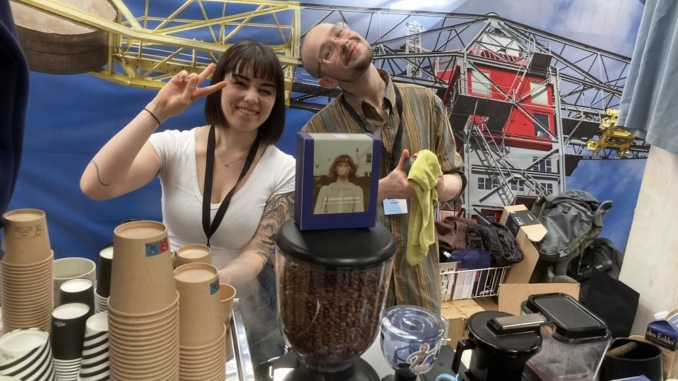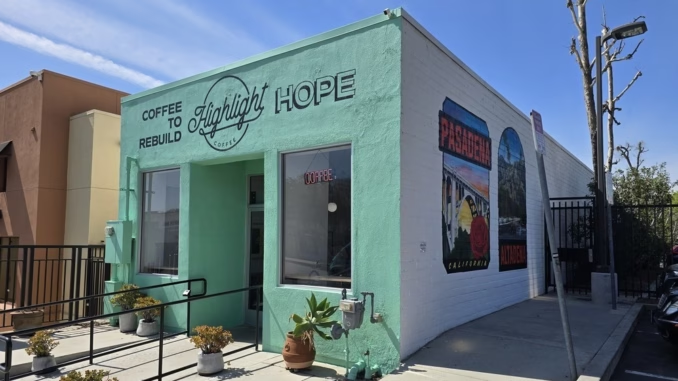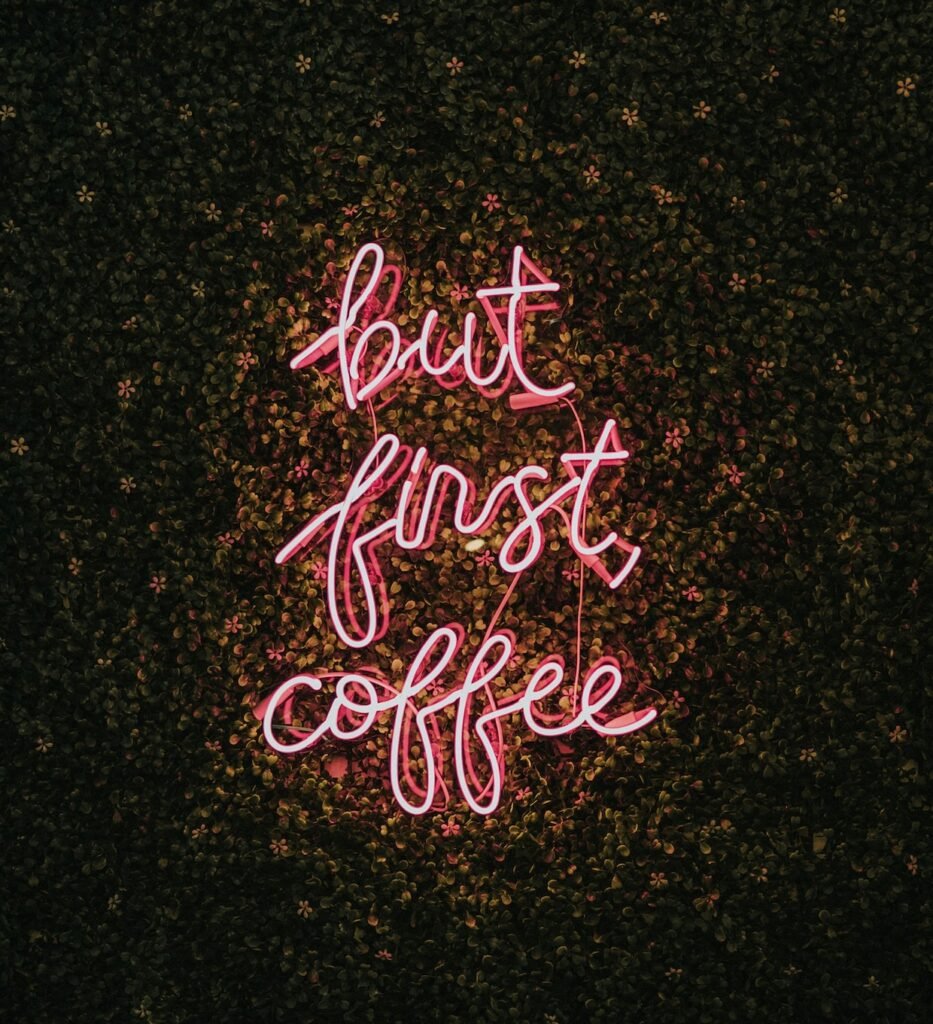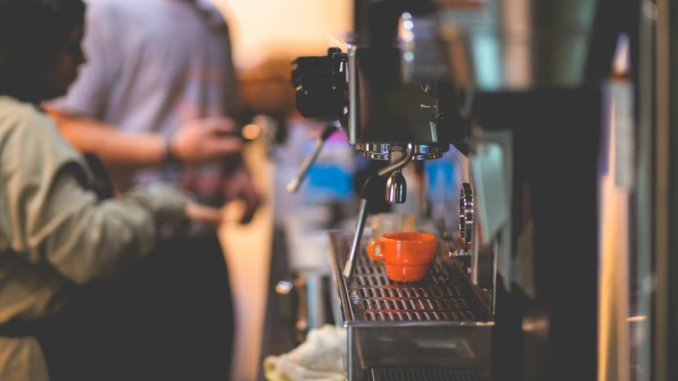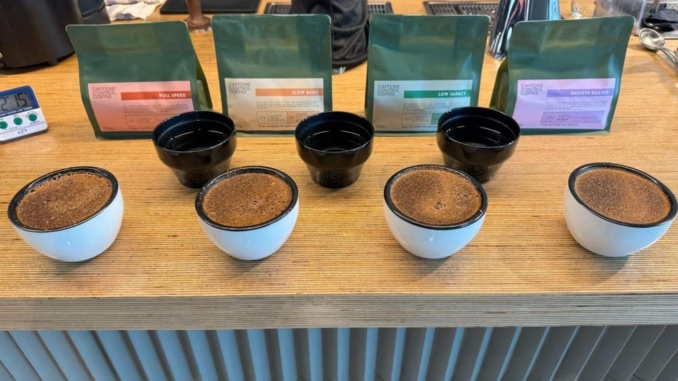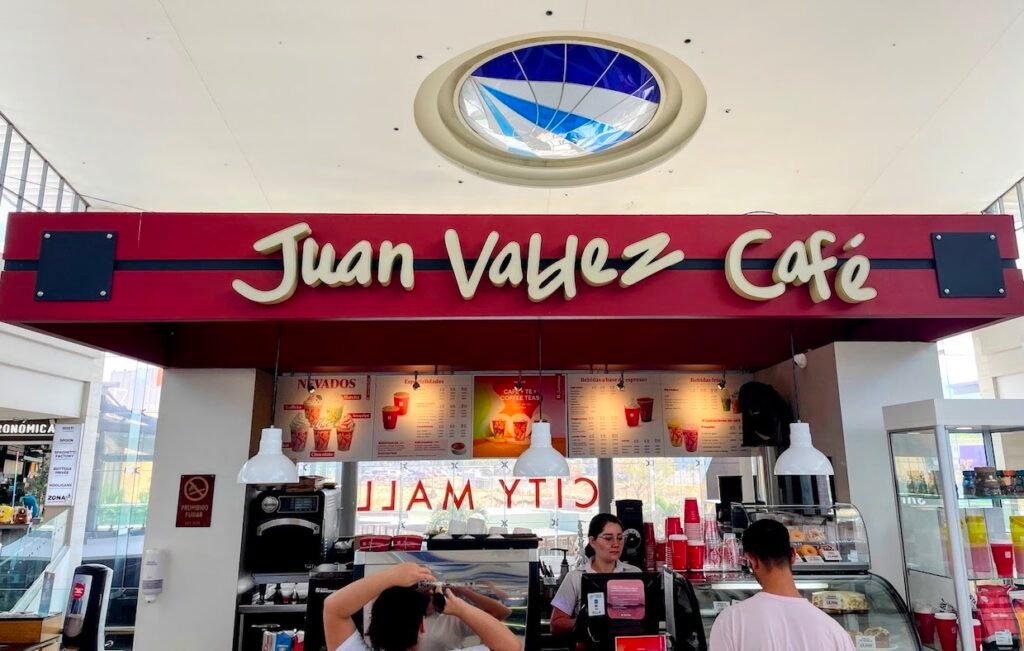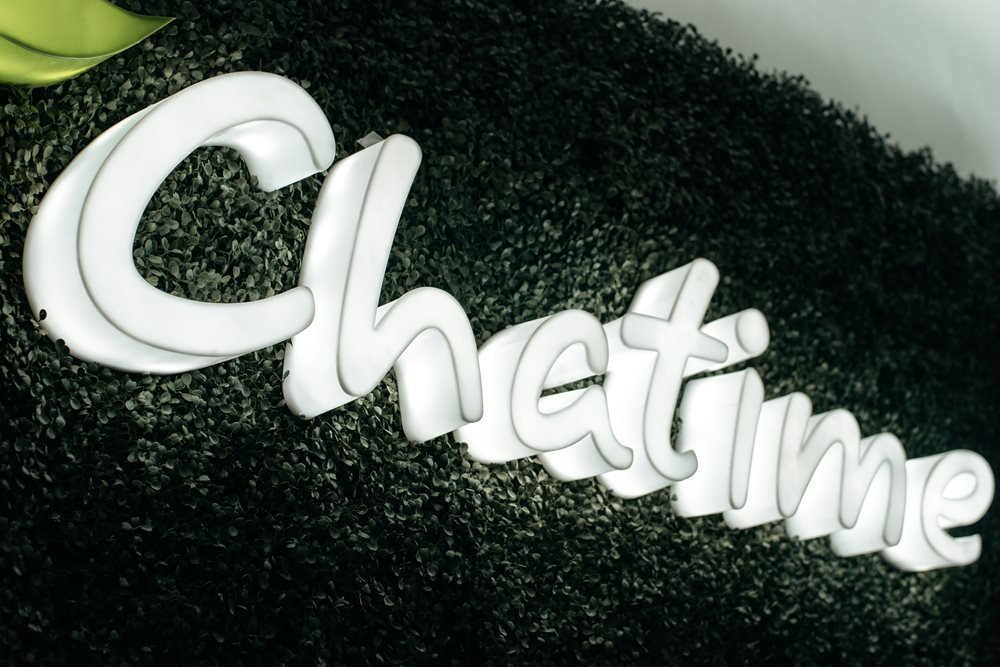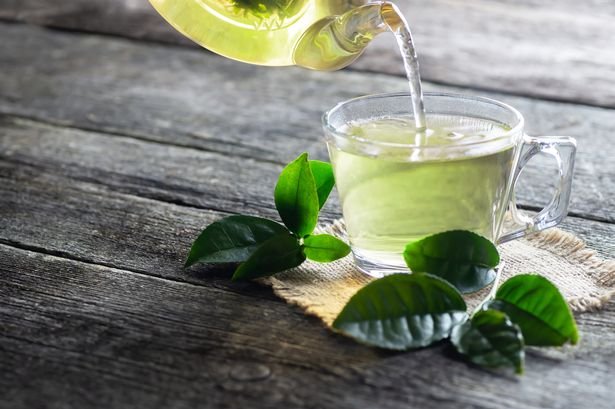As a self-professed coffee nerd, I’m always on the lookout for the best coffee makers. I drink coffee based on my mood — if I want to feel like I’m at a cafe, I’ll whip up a flat white on my espresso machine. If I’m feeling fancy, I’ll have an AeroPress, and if I want something light and airy I’ll reach for my V60.
However, there’s one brewing method I’ve always voiced my distaste for: French press. I don’t know, there’s just something about the typical result of French press that puts me off: it’s a simple brew method, but that simplicity means there’s nowhere to hide, often resulting in mis-brewed, bitter, silty coffee.
So, when I unboxed the Espro P7 French press, let’s just say I didn’t have high hopes.
But I was wrong. I was so very wrong. The Espro P7 is like the Lamborghini of French presses: it looks great, it feels great, and everyone wants one. Well, that last part was artistic license, but after I tell everyone about the Espro P7, I’m sure it’ll come true. Could it be the answer to our French press prayers? Find out in this Espro P7 French press review.
Espro P7 French press review: Cheat sheet
- Who is it for? Those who want a quick and easy way to make premium-tasting coffee
- What does it do well? It makes French press taste delectable
- What does it cost? $149 / £149 for the 32oz
- What are its weaknesses? A little bean chaff/husk can get through the filters
- Anything else to know? There are two sizes: 18oz and 32oz. The 18oz is $115
Espro P7 review Specs
Espro P7 review: Price & availability
The Espreo P7 French press is $149 on Amazon U.S. for the 32 ounce version, which is what I tested. Those requiring smaller units can snag it for $115 on Amazon U.S..
In the U.K., it doesn’t seem to be available on Amazon for a decent price, however I found it for £149 on Borough Kitchen or £120 direct from Espro.
Espro has a whole line of French presses; the $34 P3 and $44 P5 are glass-walled French presses and the $114 P6 is another metal option. The P6 is a little more rugged and designed for both indoor and outdoor usage, whereas the P7 is the top-of-the-range premium style.
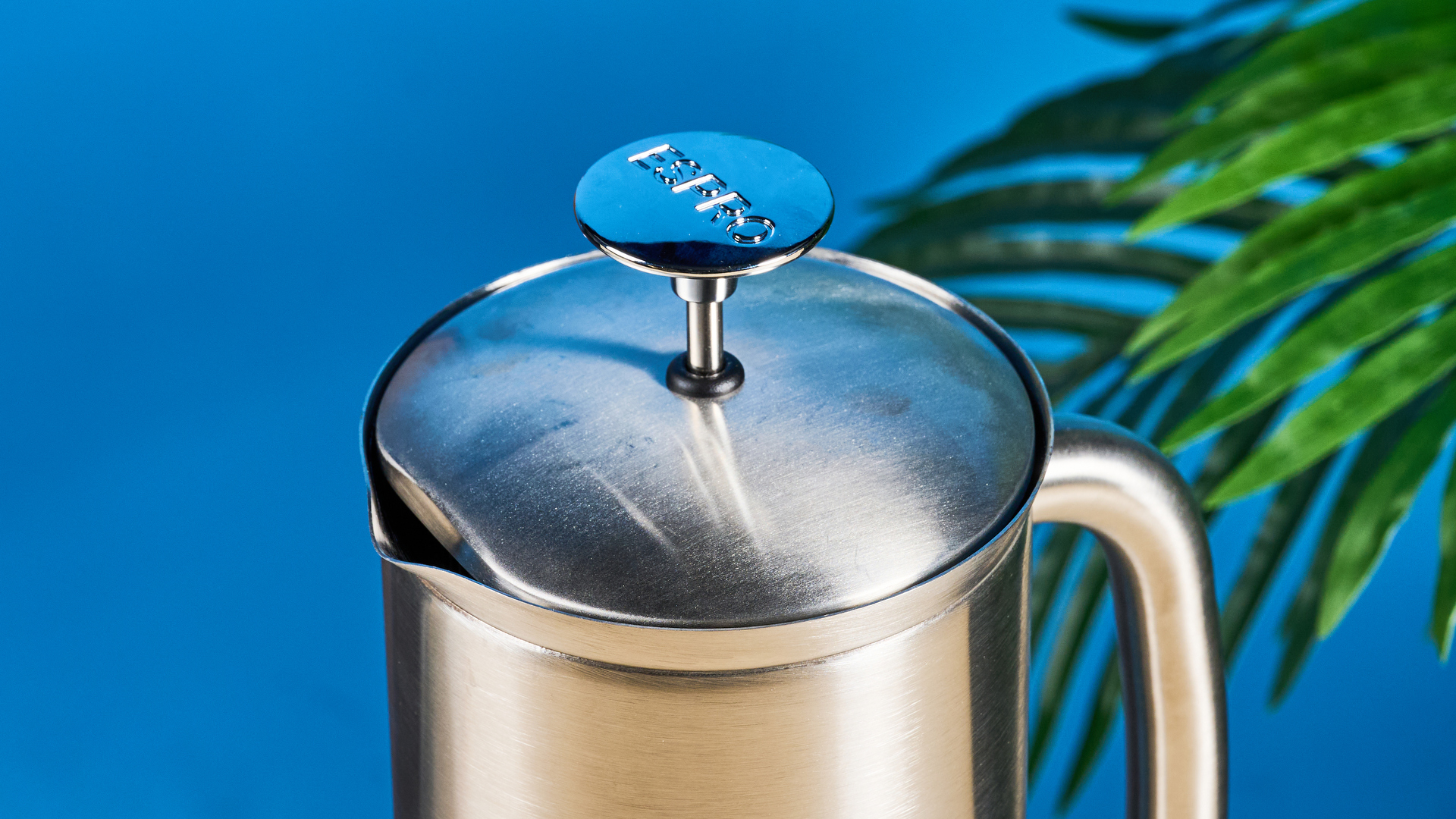
$149 is objectively a lot of money for a French press, but I’m incredibly happy to report that the P7’s coffee doesn’t actually taste like a typical French press. The dual-walled micro filters help remove bitterness and the flavor is very forgiving.
So while $149 is a pretty premium price tag, the P7 doesn’t perform like your standard plunger coffee — it’s monumentally better, and I’d say almost worth the asking price.
Espro P7 review: Design
As the P7 is Espro’s premium French press, I certainly expected that it would look as beautiful as it does. I tested the brushed stainless steel finish, but Espro also makes the P7 in a gorgeous deep red, sapphire blue, matt white, matt black, or polished steel finish.
I’m confident that whatever colorway you choose, the P7 will be a visual centerpiece in any kitchen. It’s really gorgeous, and looks miles better than any other French press I’ve seen (other than the Fellow Clara).
What separates the P7 from a normal French press is its patented design features. The P7 has an “AirLock”, which is a silicone seal on the inner wall of the dual-walled filter basket. The AirLock is basically designed to stop the coffee brewing as soon as you plunge, so the final cup of the brew isn’t overly strong.
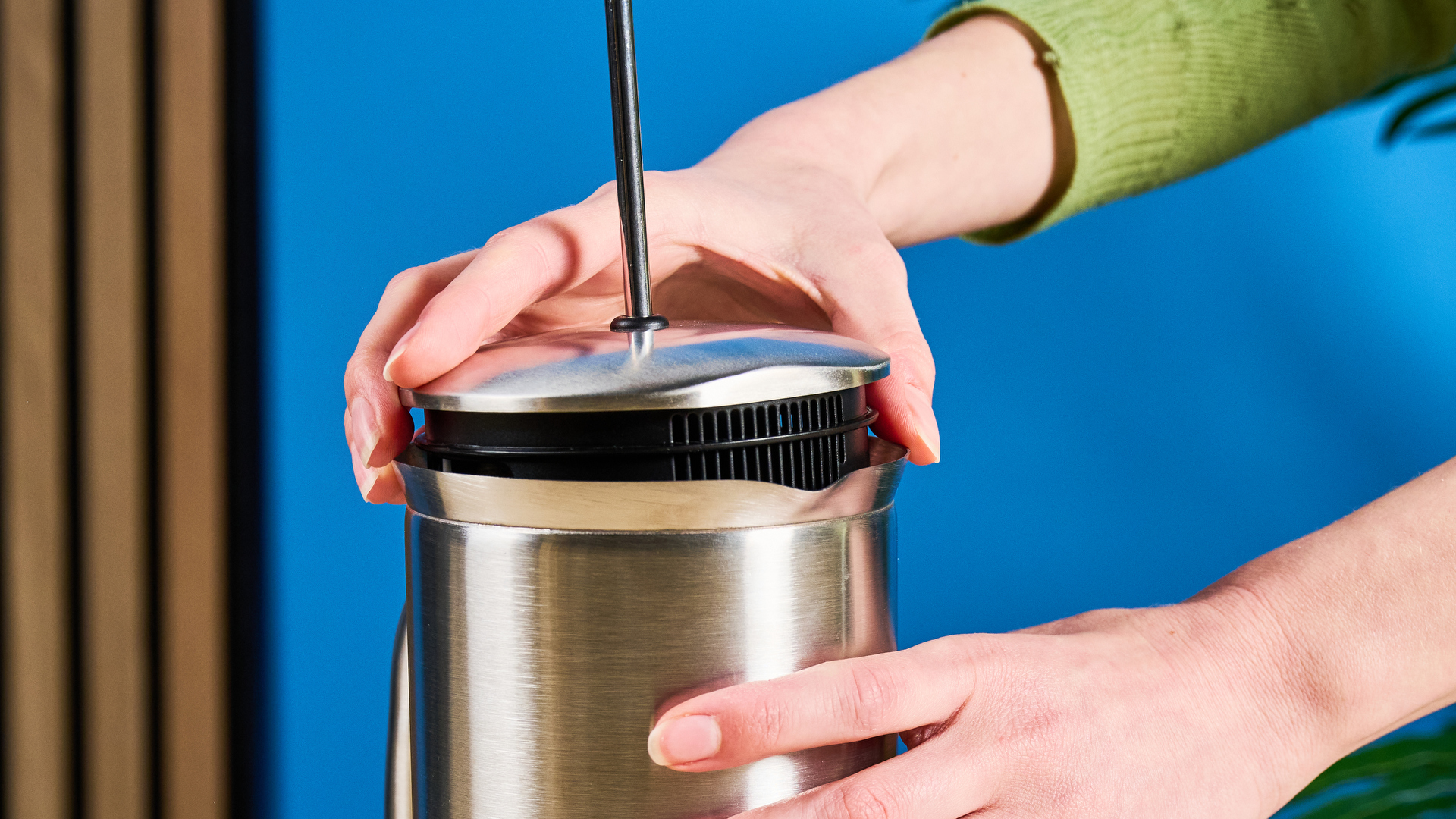
Now onto that dual-walled filter basket: instead of a horizontal sieve-like mesh covering the plunger, the P7 has a super unique filter ‘basket’. It’s two layers of filter in one: the outer basket is fine micromesh, and the inner basket is ultrafine micromesh. If you so desire, Espro also makes paper filters to slot between the inner and outer filter to remove oils from the final brew.
That’s why I actually love the P7’s coffee: it has very minimal silt, as opposed to standard French presses, and the flavor is rich and deep, yet with none of the bitterness I’ve come to expect from French press, which while simple to use, is very easy to get wrong.
The two layers are easily separated for deep cleaning and click securely into place. As with everything on the P7, the filters are extremely well-made. There are no unfinished parts or skimped-on design features here, and there’s a definite intention to the design.
Espro P7 review: Performance
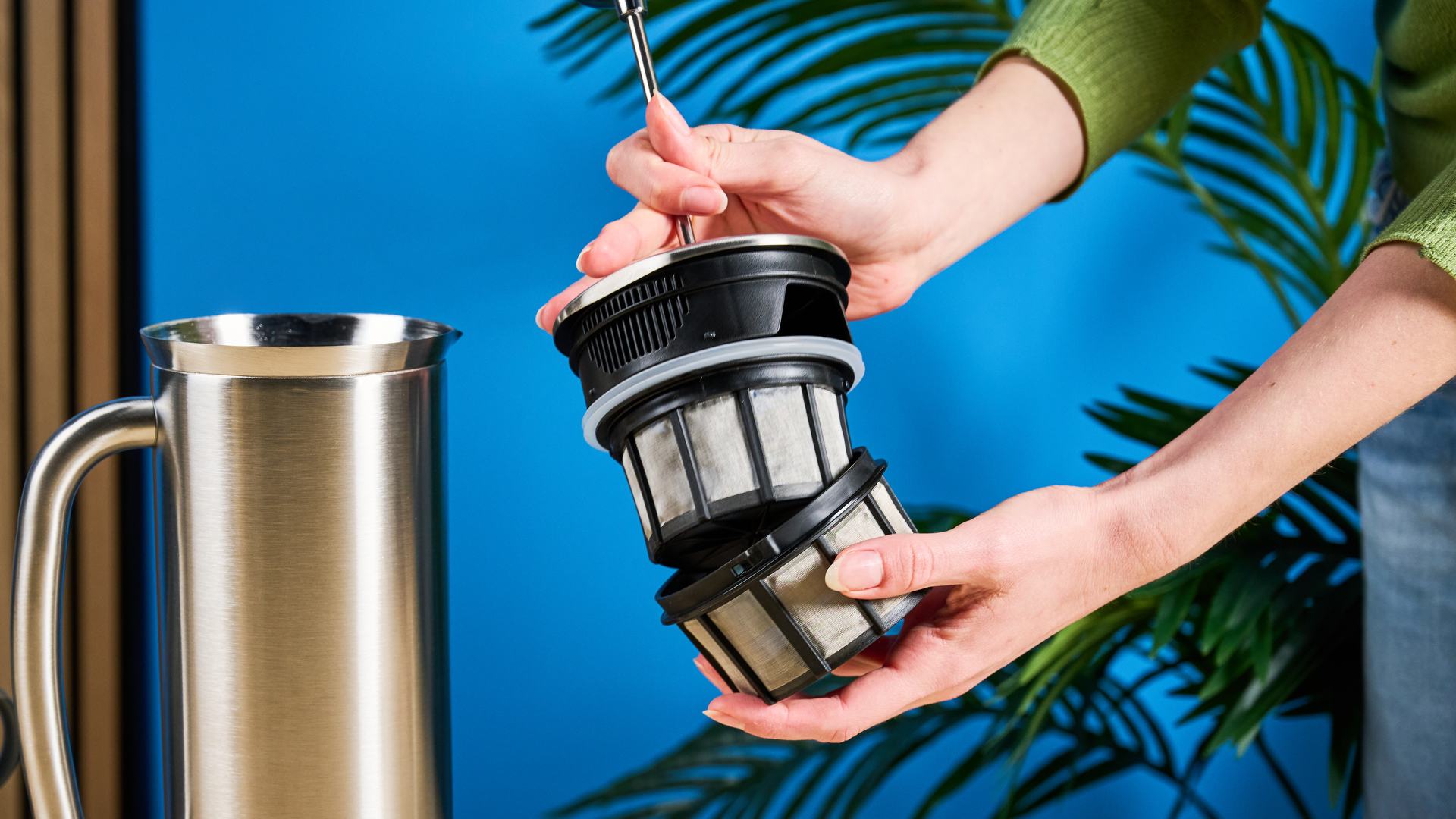
As the P7 is, at heart, a French press, it’s very easy to use. Espro provides a handy diagram as instructions, but if you’ve ever used a French press before, it’s essentially the exact same thing.
Helpfully, Espro also provides a detailed recipe chart with different roasts requiring different brewing ratios. If you use a darker roast, you need to have a higher ratio of water, and light roast, vice versa. As I was using a medium roast, I followed the medium roast instructions, which I’ll run through in detail in my Espro P7 routine below.
The instructions are as follows:
|
Roast |
Ratio |
|---|---|
|
Light |
1:12 |
|
Medium |
1:15 |
|
Dark |
1:18 |
However, these are by no means an exact science, and Espro itself says users should experiment to achieve their desired results.
I was using a medium-dark roast (medium enough to still have chaff, but dark enough to be rich and chocolatey in flavor), so I went for around a 1:17 ratio with 50g of coarse-ground coffee.
As I mentioned in the ‘Design’ section, Espro also sells paper filters to provide an ‘ultra-clean’ flavor profile with no oils. I tried the P7 with and without the paper filter and preferred the taste without the filter.
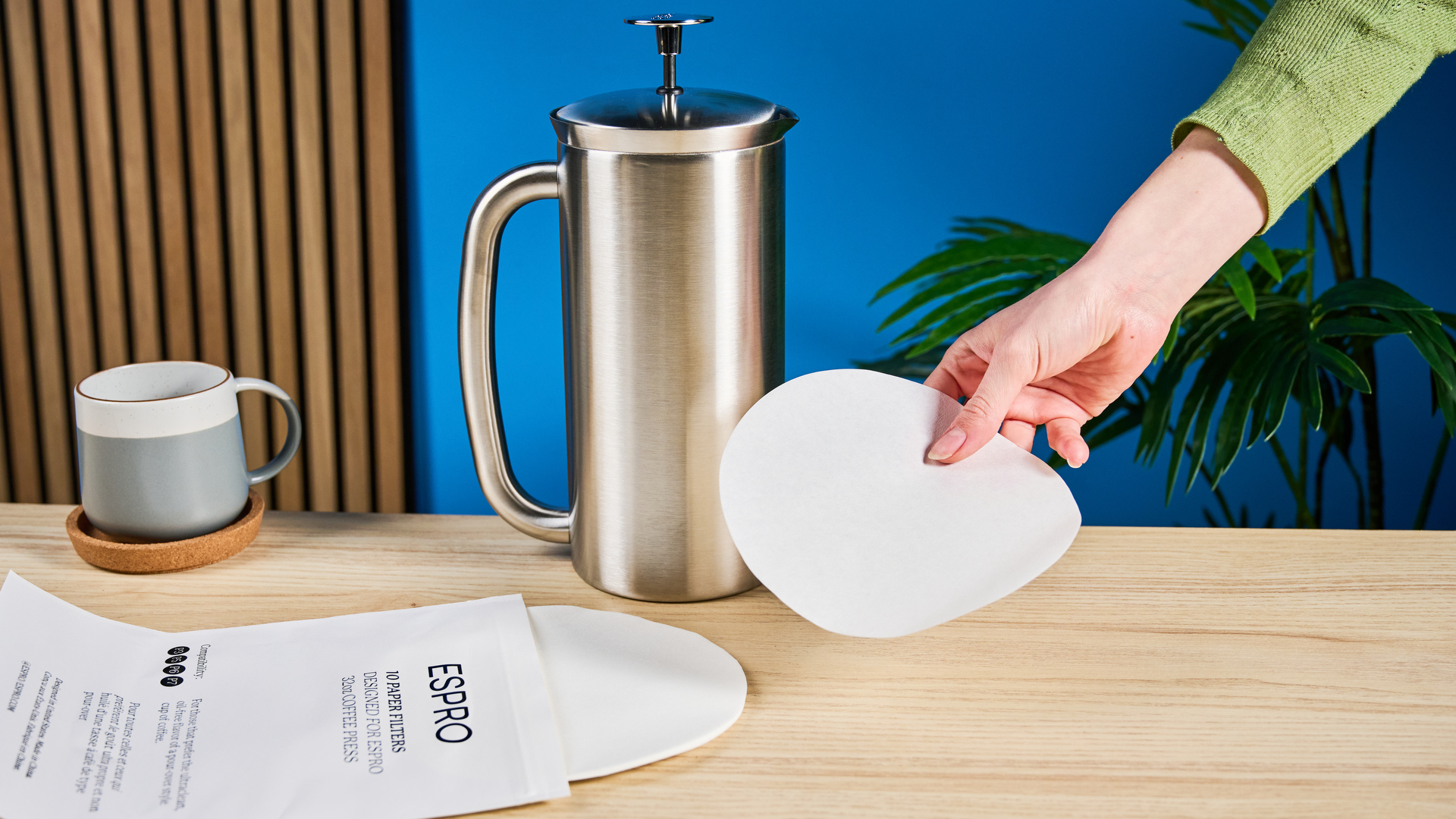
Due to the P7’s nature as a French press, it’s far simpler to master than a pour-over like a V60 or a Kalita Wave. There’s no requirement for pour perfection, and because the coffee is brewed via immersion rather than dripping, achieving a more balanced flavor profile with a range of notes, plus decent body, is relatively easy.
As a result, I’d recommend the P7 for coffee lovers who just want a full-bodied hit of caffeine and aren’t fussed about the routine of brewing coffee. It’s also very simple to use, as you’ll be able to see from my P7 routine.
If you’ve got the Fellow EKG Stagg or Corvo kettles, using the P7 will be really satisfying — or it was for me, anyway. The ‘Max’ line of the P7 is precisely the same amount as the Fellow EKG Stagg gooseneck kettle ($165), so I could pour confidently knowing that I had the right amount of water.
Espro P7 review: My go-to Espro P7 routine
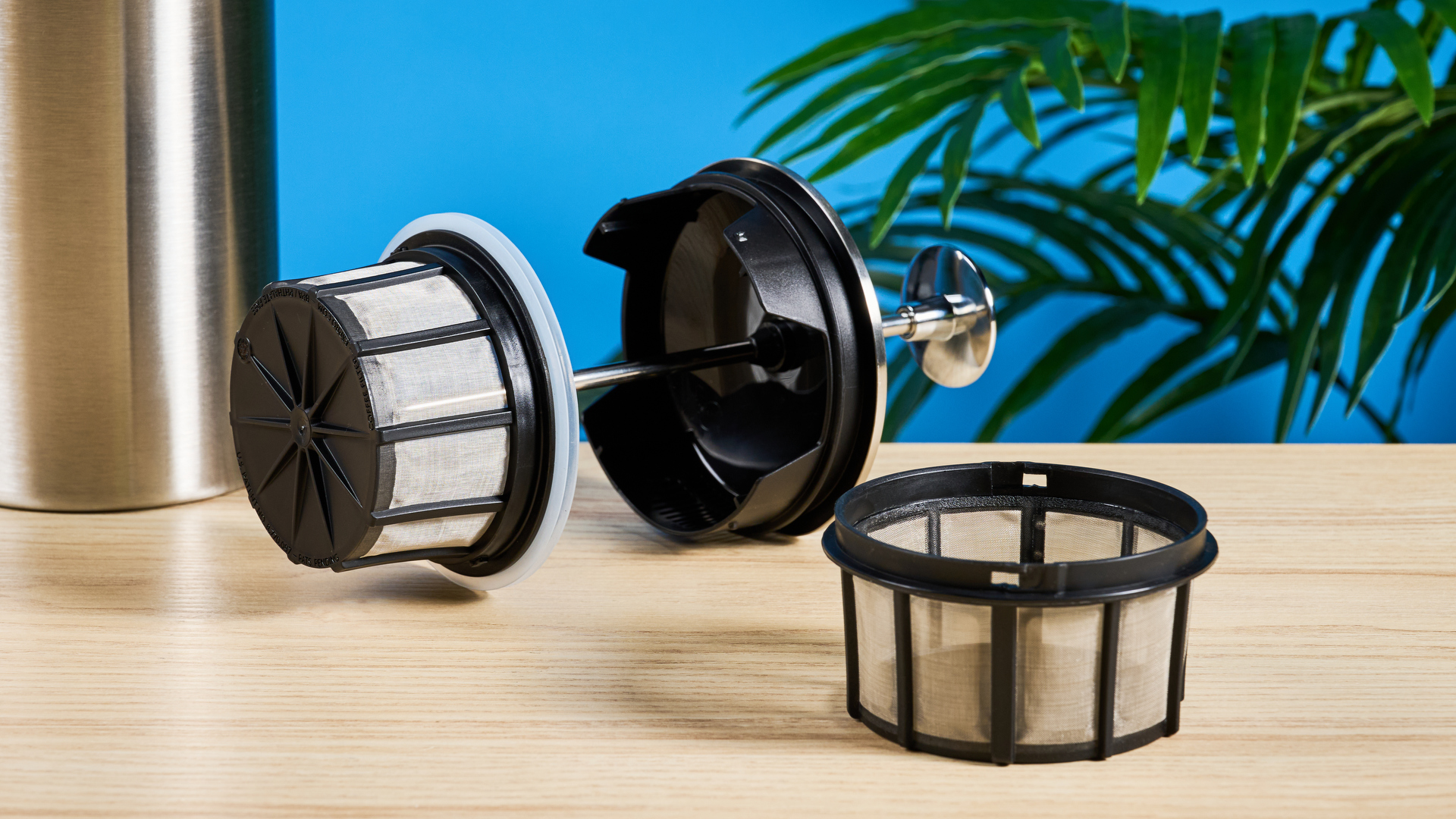
I heated 900ml of water to 200°F using my Fellow Stagg kettle. Then I added 50g (around 10-12 heaped tablespoons) of coarse-ground medium roast coffee to the P7 and poured in water to the ‘Max’ line. I stirred and added the P7’s lid with the spout facing away from the cafetiere’s spout to retain heat.
After 4-5 minutes, I moved the lid’s spout to the cafetiere’s spout and started plunging slowly. Plunging too quickly might result in a siltier coffee.
The 32oz P7 made about four mugs of coffee with room for milk. As the P7 is a dual-walled French press, an hour after brewing the coffee temperature was still 160°F. After two hours, it was 136°F. Very impressive insulation.
Espro P7 review: Storage & maintenance
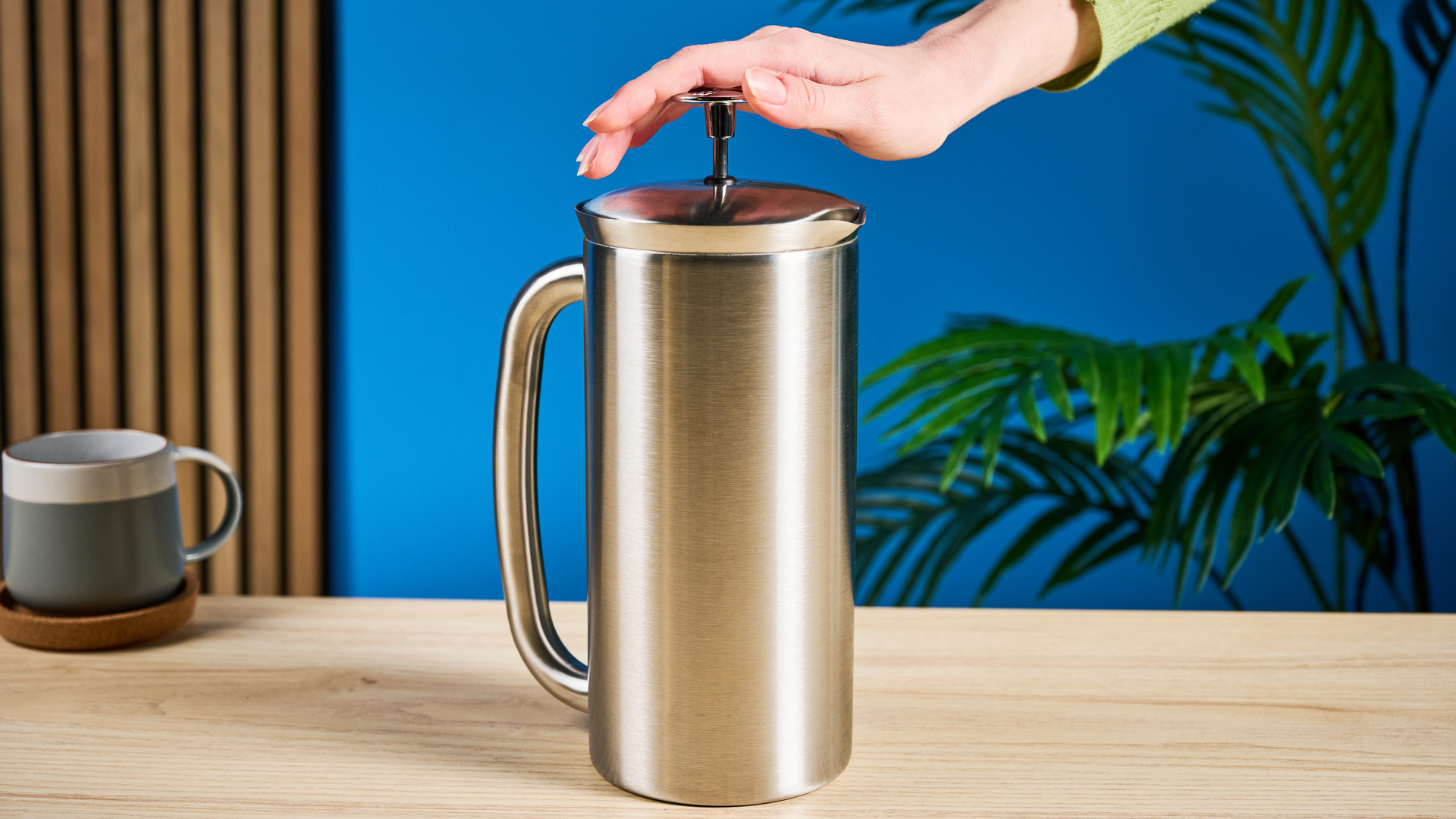
The Espro P7 is pretty tall at 10 inches high, but it’s pretty enough that it can be left out on breakfast islands or coffee tables as a display piece between uses. It doesn’t fit in my kitchen cabinets but it does fit in my apartment’s wine rack.
I must caveat this by confessing that I didn’t install said wine rack and it currently holds just one bottle of (cheap) wine, but the P7 looks great stored there.
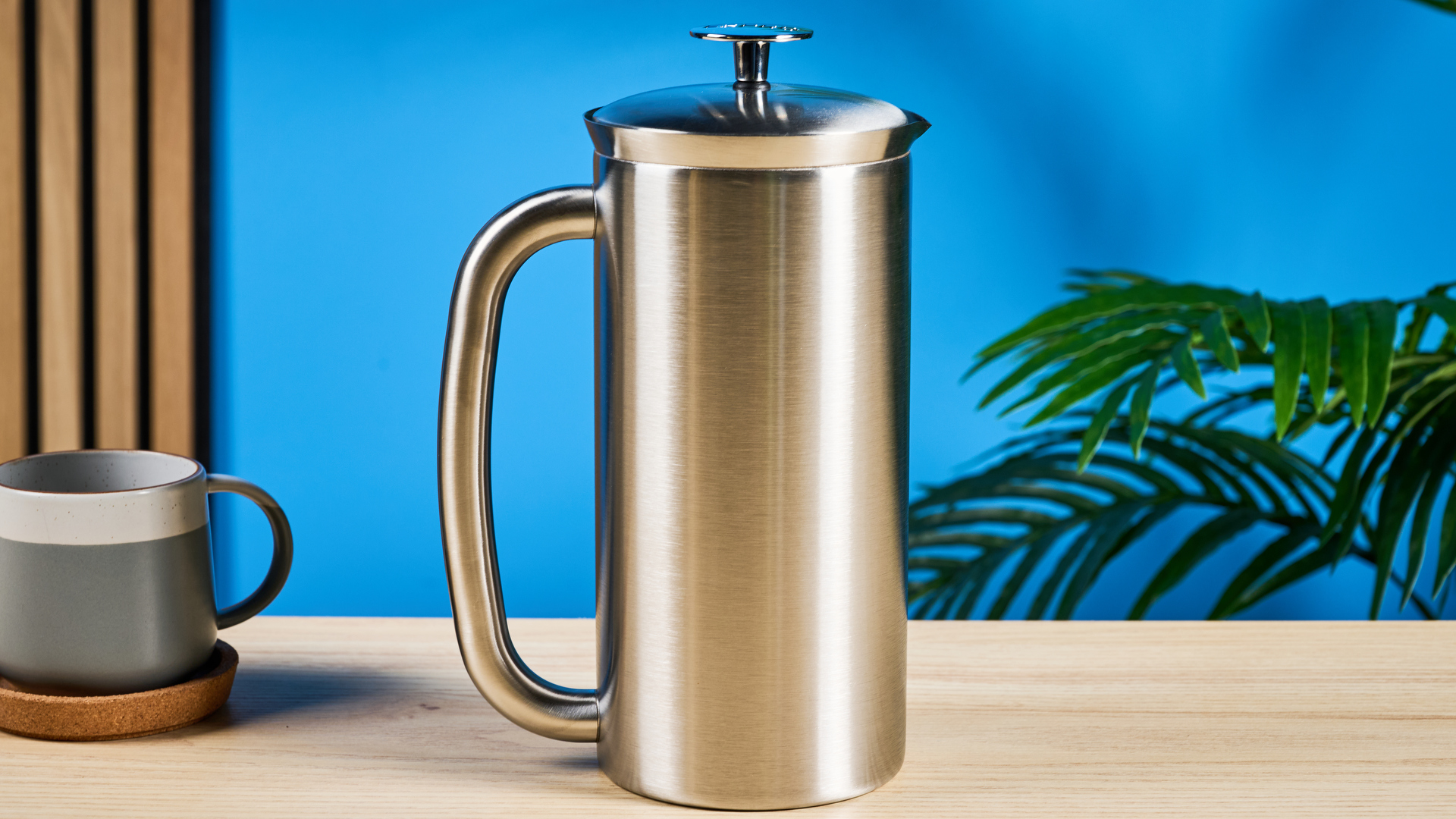
If you damage or lose the filter basket, Espro sells a replacement dual-walled filter basket for $19, which is obviously much cheaper than buying a replacement product. The paper filters are $9.95 for 100, which works out to about 10 cents per filter. The Espro filters are completely flat and designed to fit perfectly in the filter basket, so I wouldn’t really recommend using non-Espro filters.
Cleaning is straightforward, if a little tedious. I unscrewed the lid and took apart the two filters before washing them with warm soapy water and drying with a paper towel. Espro says the P7 is technically dishwasher safe, but it recommends hand washing to prolong the life of the product.
Espro also sells a Deep Clean Micro-Filter cleaner for $15, which is supposed to restore flavor and remove sediment trapped in the filter.
Espro P7 review: How does it compare?
For those who love an easy way to brew coffee, the P7 is one of the best ways to achieve great-tasting yet minimal-effort drinks. As it’s a French press, it’s as easy to use as any other version, but the flavor is much superior thanks to its filtration system.
However, if you actively enjoy the routine of making coffee and you want to make use of specialty coffee gear like the best coffee scales, then I’d recommend a pour-over instead of a French press. Pour-over feels more active and considered, and requires a hand-on approach. However, I do not recommend these pour-overs for batch brewing, where you’ll want a traditional dripper like the Technivorm Moccamaster KBGV Select.
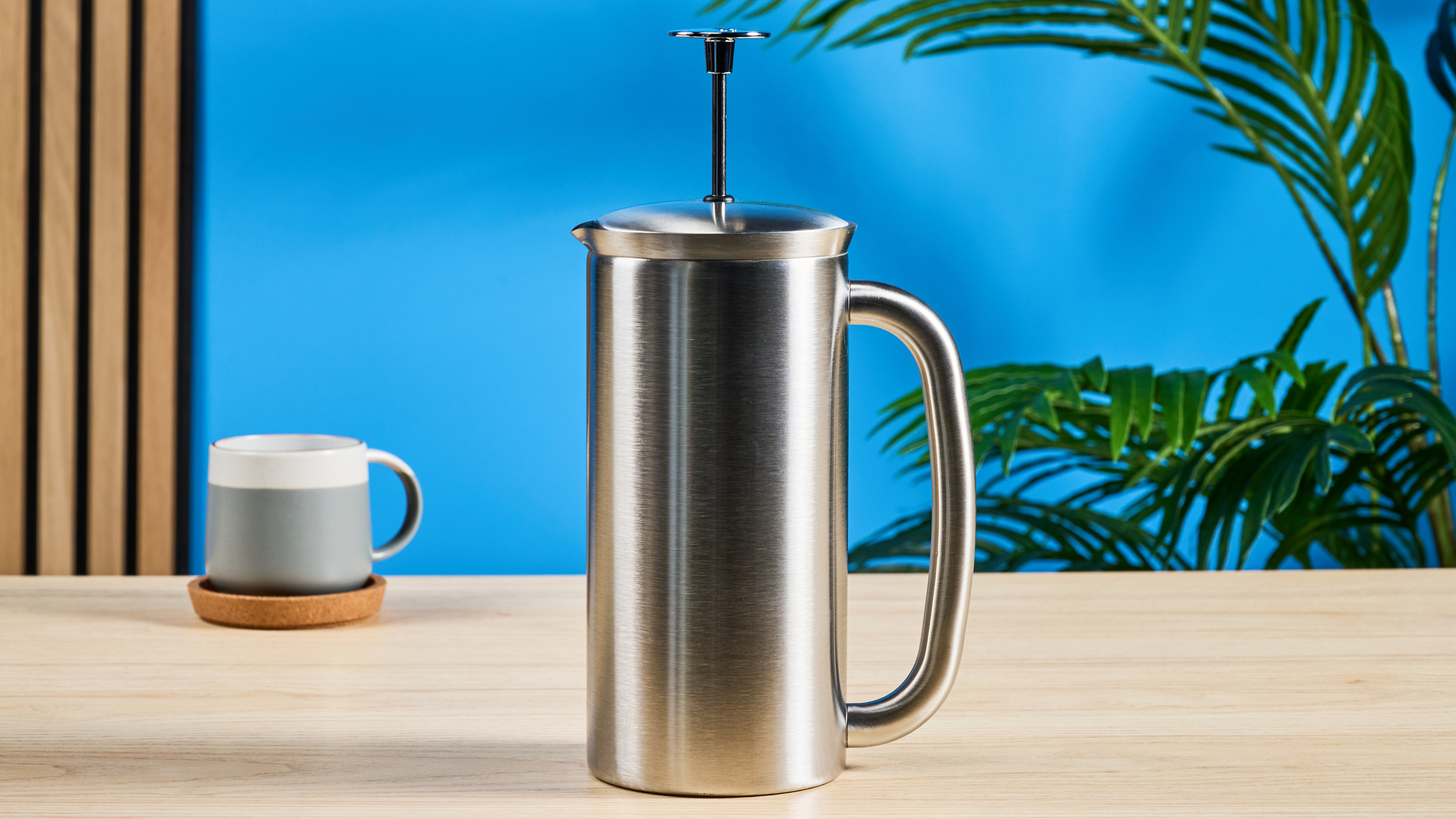
My favorite pour-over is a Hario V60 for its lightness of flavor, but the Kalita Wave is also a great way to get the pour-over flavor with less reliance on pouring perfection. I do love AeroPress, too, as it has a lovely floral aroma without being bitter or weak. However, these three methods are much more hands-on and time-consuming than simply pouring water, stirring, and waiting.
An alternative to the Espro P7 for larger brews would be a Chemex, as Chemex produces coffeemakers big enough to make 10 cups. Chemex is much easier to clean than the P7 — simply compost the filter and rinse — but it requires a steadier, controlled pour, and more time.
I would also recommend the Clever Dripper, which is a super unique way of brewing steeped coffee. Even the large Clever Dripper can only make up to 500ml/1-2 cups of black coffee, so, again, not recommended if you want to brew 900ml in one go. However, it is just as easy to use as the Espro P7.
Espro P7 review: Verdict
The Espro P7 takes French press to the next level — the level we so desperately needed. The P7 brews a deliciously balanced, rich, and full-bodied cup of coffee without the dreaded sediment or overextraction other French presses tend to carry.
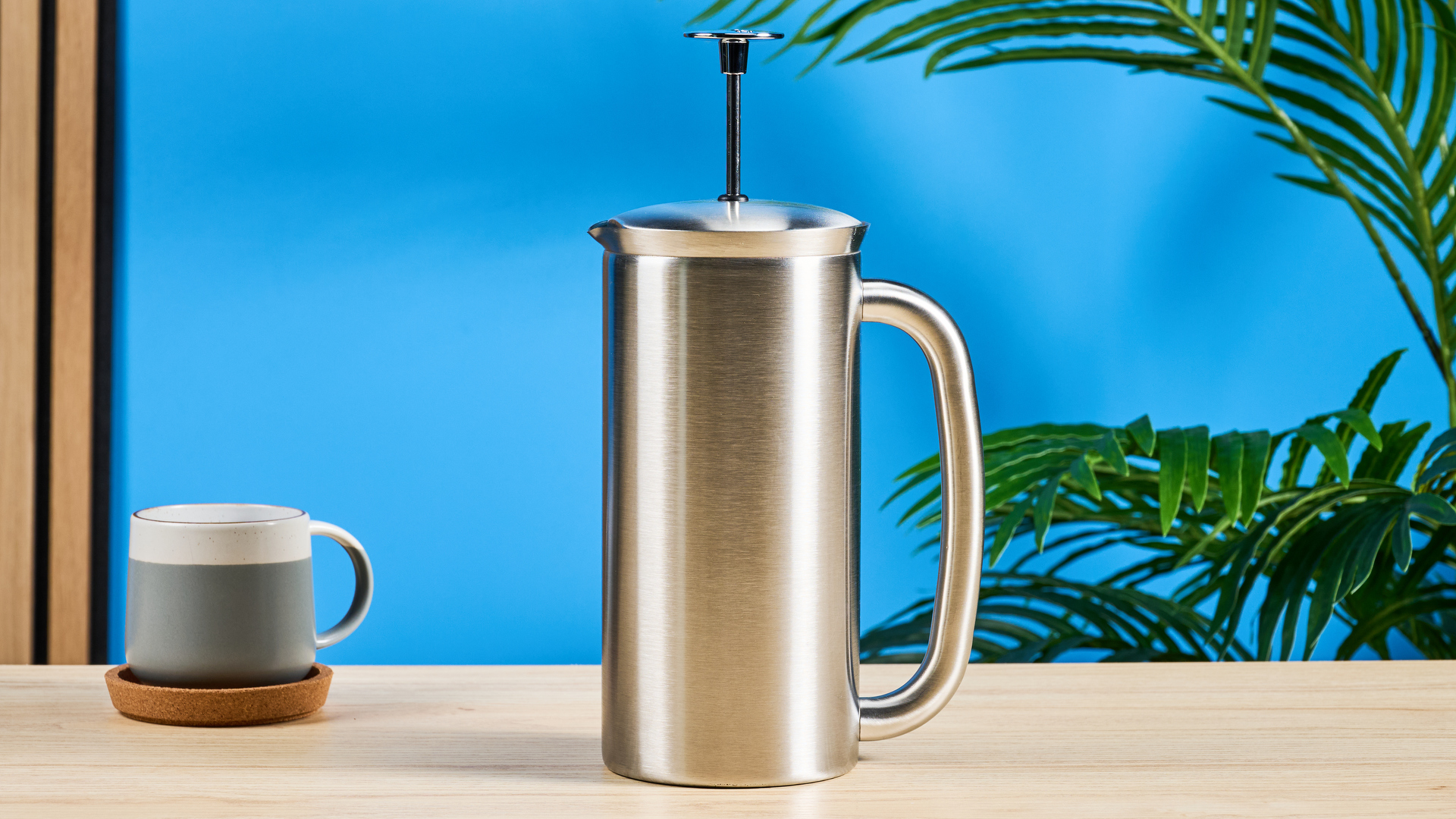
I will note that the filter baskets aren’t 100% adept at removing all solids, as there were a few pieces of bean chaff in some of the cups I made. However, I don’t mind this at all, and it stems only from the fact that I was using medium-roasted coffee. With dark roast, this wouldn’t be an issue as dark roasted beans lose the chaff during roasting.
While, yes, it’s very expensive at $149, it’s cheaper than some electric drip brewers like the Fellow Aiden ($365) and the Technivorm Moccamaster ($349). The Espro P7 keeps warm for a relatively long period, and doesn’t use electricity to maintain that heat. I am a French press convert now, and look forward to using the Espro P7 again.


